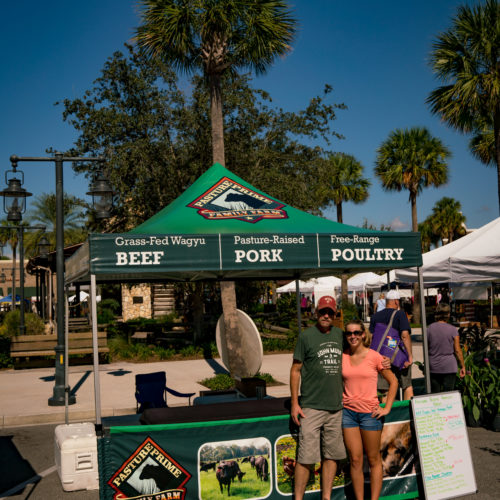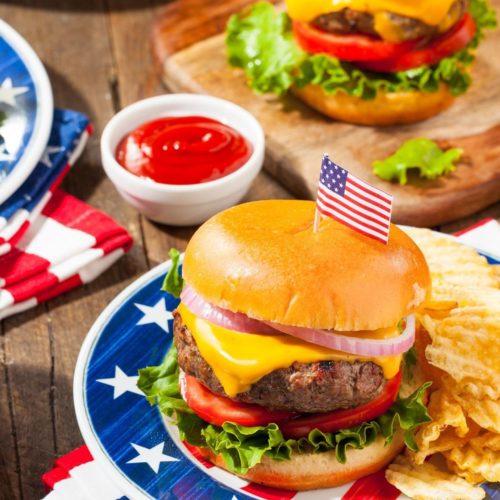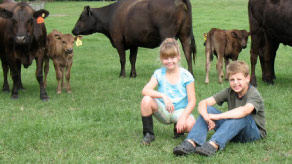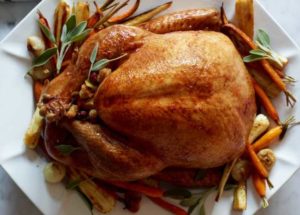
What is it about turkey?
Just saying the word conjures Norman Rockwell-style images of smiling faces clustered around a table laden with a holiday feast that stars a beautifully roasted turkey.
I mean, obviously Norman forgot to paint the moments where the kids argue over who gets a drumstick and a heated debate breaks out over exactly how much butter should be added to the mashed potatoes (the answer is always MORE BUTTER), but whether it’s Norman Rockwell or Real Life, the anchor of both holiday scenes is the turkey.
So. It’s time to talk turkey. (Which is a funny pun because “to talk turkey” means to talk seriously and get down to business, but we are ACTUALLY going to be talking seriously about turkey! Yes, I realize jokes aren’t funny if you have explain them, but I’m not deleting it. Ahem. Moving on…)
Let’s start at the beginning:
How to Pick Your Turkey
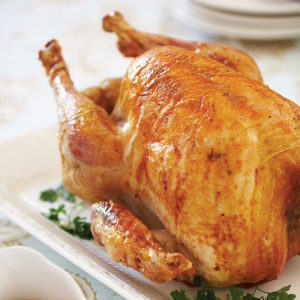 The different labels that can be applied to turkeys can be a bit confusing, so let’s start with some definitions:
The different labels that can be applied to turkeys can be a bit confusing, so let’s start with some definitions:
Fresh – A turkey that hasn’t been chilled below 26 degrees Fahrenheit.
Frozen – A turkey that has been chilled to zero degrees Fahrenheit.
Deep-chilled – This is halfway between fresh and frozen, so chilled to anywhere between 0 and 26 degrees.
Organic – This refers to how the turkey was raised. Organic turkeys are raised without hormones or steroids and are processed without added preservatives.
Non-GMO – “Non-GMO” stands for “non-genetically modified organisms.” To genetically modify foods, scientists take some DNA from one organism, such as a bacterium, virus, animal, or plant, and combine them with the DNA of the modified plant they want to grow. A non-GMO turkey means the turkey was not fed genetically modified food.
Free-range – This means the turkey had access to the outdoors and was not kept solely within a cage.
Natural – A natural turkey has been minimally processed and hasn’t been modified in any way, like brining or injecting flavors.
Self-basting – This applies to many of the turkeys found at your local supermarket and means the turkey was injected with a brine or flavor solution during processing to keep them from drying out during cooking.
So, What’s the Best Option?
We believe that turkeys should be allowed to be, well, turkeys. Our turkeys are free-range (and non-GMO, which means they were never given genetically modified feed), so if our turkeys want to roam around the pasture, we let them. In fact, we encourage them!
We want our turkeys to be happy and allowing them the ability to exhibit natural turkey behaviors is a big part of that. Want to see video of exactly how free-range our turkeys are? Click here to see them hanging out, just doing their turkey thing, around the farm. And then click here to reserve your non-GMO free-range turkey in time for Thanksgiving.
(Not sure what size bird you’ll need for your meal? The rule of thumb is one pound per person.)
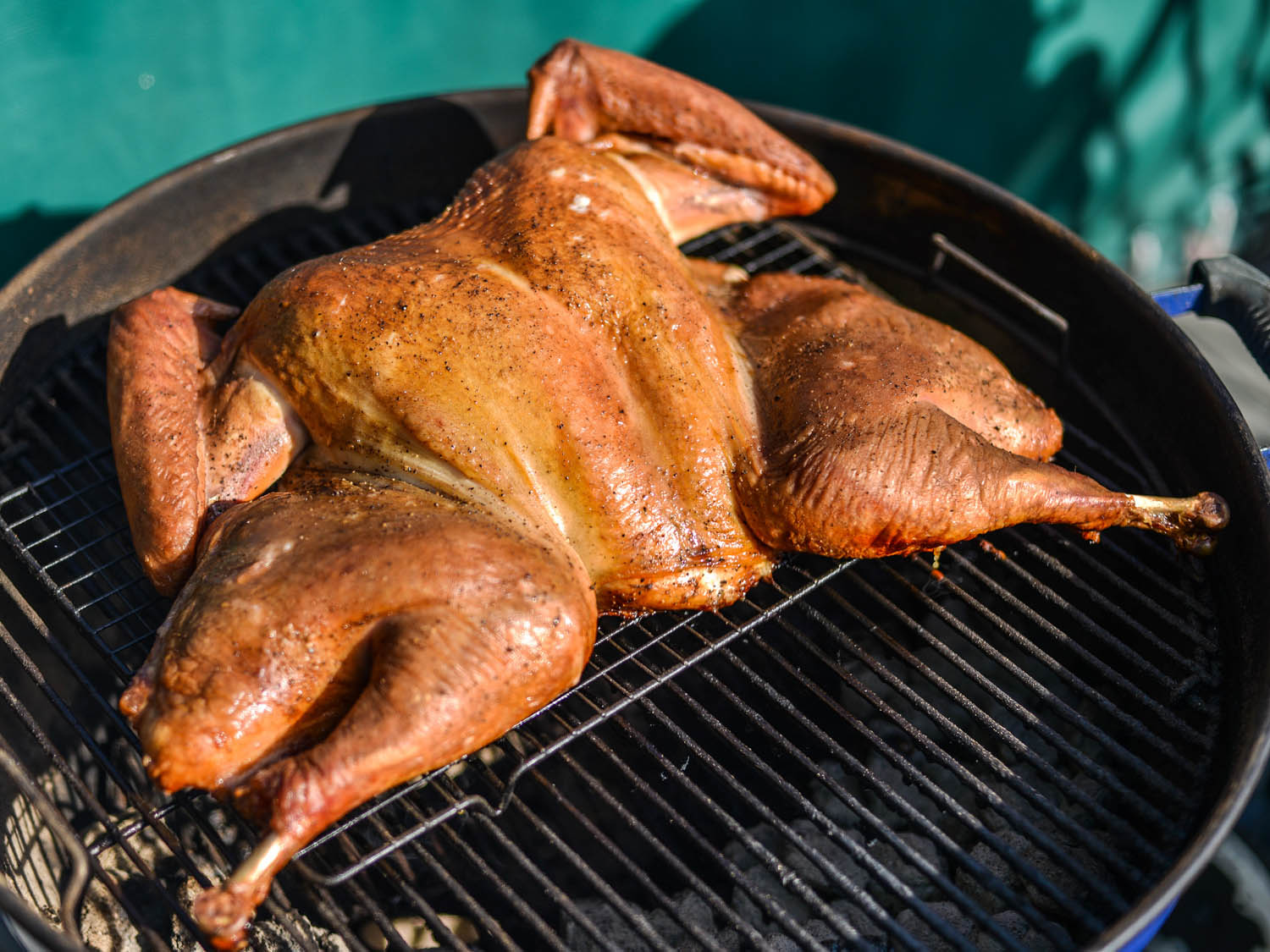
Okay, I’ve Got My Turkey…Now What?
We are sharing our favorite roast turkey recipe this year. This is our go-to, never-fail option, and it’s foolproof as long as you start with a natural, antibiotic-free turkey that hasn’t been injected with any type of brine or flavor solution. Check out the Classic Roasted Turkey recipe from Food & Wine magazine.
Looking for an option other than the classic roasting method this year? Try spatchcocking! To spatchcock a bird means you have removed the backbone and flattened the turkey before cooking it skin side up. Because the turkey has been flattened to a consistent height, the bird cooks faster this way than if it were trussed and roasted.
Does the idea of removing the backbone feel a little intimidating? Feel intimidated no more! Bon Appetit has a great step by step video to guide you through the process. Just grab your kitchen shears and get started.
Other Tips to Keep in Mind:
- If your turkey is frozen, make sure you allot plenty of time for the bird to completely thaw in the refrigerator (typically one day for every five pounds).
- Be sure to gently pat your turkey dry with paper towels. This is an essential step for the turkey to develop crisp, delicious skin while it cooks.
- Browning—sounds delicious! What is it? Rubbing the turkey with olive oil or clarified butter (“clarified” means the milk solids and water have been separated from the butterfat, making clarified butter pure butterfat and absolute liquid gold in the kitchen. Here’s a how-to) helps the turkey to brown evenly. Adding a little sprinkle of kosher salt will help crisp the skin even further.
- Let that turkey rest! Once you take the turkey out of the oven, let it sit for about 20 minutes. This will allow the juices in the turkey to redistribute before you slice it, making each slice as moist and yummy as possible.
- Most important: try to resist opening the oven door until the turkey is done cooking. We know it’s hard to wait (it smells so good!) but opening and closing the oven door will cause the turkey to cook unevenly, and with the Classic Roasted Turkey recipe, no basting is needed, so leave that oven door shut and just wait for the big meal reveal.
Let’s Eat!
Okay, your bird is perfectly browned, that distinct, savory turkey smell is filling the house, and your stomach is rumbling like crazy. Time to eat! But first, you need to carve that bird.
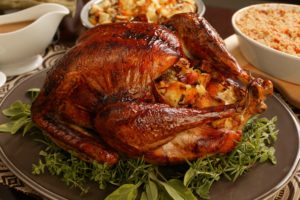
There’s an art to carving a turkey, and fortunately, it’s one even the most knife-inept of us can master. The trick is to approach it systematically and break it down to make removing the meat from the bone a piece of cake (or pie, as the case may be).
- Place the turkey on a carving board while it rests. While the turkey rests, place your serving platter in the oven (make sure it is turned off!) to warm up so the meat will stay hot longer when served.
- Using a sharp slicing knife (we don’t recommend a serrated knife as this will tear the meat), place the knife at the point where the thigh meets the breast and slice down to cut through the joint.
- Cut through the leg joint to separate the thigh from the drumstick.
- Repeat on the other side.
- With your knife held at an angle, slice the meat off the thighs and (if desired) the drumsticks.
- Insert the tip of the knife between the ball joint of the wing and the socket and cut through the joint to remove each wing.
- Carve the breasts off each side of the rib cage with a long, thin cut right along the breastbone.
- Slice the breast meat on the bias (crosswise) in half-inch slices.
- Eat until you can eat no more.
Can you tell we are SO ready for the holiday season to start? We can’t wait to enjoy a beautifully roasted, humanely raised, delicious turkey with our family this Thanksgiving. Make sure to reserve your own non-GMO free-range turkey to make your Thanksgiving holiday that much more delicious this year.



